#NVIDIA JetPack SDK
Explore tagged Tumblr posts
Text
JetPack SDK 5.1.2 Release Now Live!
JetPack 5.1.2 is the new production release for the full NVIDIA Jetson Orin and Jetson Xavier family of hardware. It adds support for the newly available Jetson AGX Orin Industrial Module. NVIDIA Jetson AGX Orin Industrial Module Here’s the official blurb from the NVIDIA Jetson Forum: JetPack 5.1.2 , the latest production release for Jetson is now live! JetPack 5.1.2 adds support for Jetson…
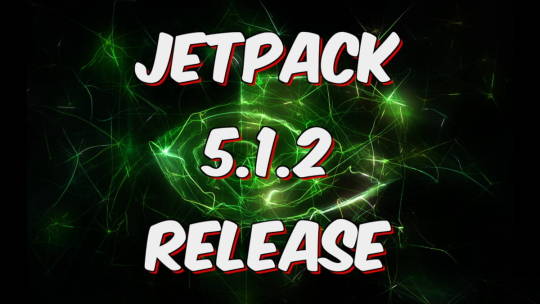
View On WordPress
0 notes
Photo

We just released a whole new series of camera modules for the Nvidia Jetson Nano computing platform, check it out on our site!
Read the article here: http://bit.ly/2KF4CLK
Or buy it from one of our distributors here:
http://bit.ly/Buy-Arducam
#camera module jetson nano#Jetson nano cameras#wide angle camera module#zero-distortion camera for jetson nano#zero-distortion#spy cam#spy camera for pi#spy cam nvidia#nvidia cameras#neural networks#image classification#object detection#segmentation#speech processing#NVIDIA JetPack SDK#world-leading AI platform#training ai#deploying AI software#Jetson Nano module#carrier board#jetson nano support info#Deep Learning Institute#getting started with ai
0 notes
Link
Nvidia has resolved a trio of vulnerabilities impacting the GeForce Experience suite.
GeForce Experience is software designed by Nvidia with games and live streamers in mind, including driver update management, driver optimization for gaming and graphics cards, and both video & audio capture.
On October 22, Nvidia said the firm's latest security update tackles issues found in all versions of GeForce Experience prior to 3.20.5.70 on Windows machines. Nvidia says the issues could lead to "denial of service, escalation of privileges, code execution, or information disclosure."
The first vulnerability, CVE‑2020‑5977, has been issued a CVSS v3.1 score of 8.2 and is described as a flaw in the Helper NodeJS Web Server module of the software. An "uncontrolled search path" is used to load a module, and it is this lack of restriction that can be exploited by attackers for the purposes of executing arbitrary code, denial of service, privilege escalation, and information leaks.
The second security flaw, CVE‑2020‑5990, has been assigned a CVSS severity score of 7.3. Found in ShadowPlay, the live stream and broadcast facility in Nvidia's software, a vulnerability can be abused to trigger code execution, denial of service, and information disclosure. The vulnerability may also be utilized to perform a privilege escalation attack -- but this can only be performed locally.
Finally, Nvidia has resolved CVE‑2020‑5978, a low-impact vulnerability with a CVSS v.3.1 score of 3.2. A security flaw within GeForce Experience's nvcontainer.exe service, in which a folder is created under standard user login situations, can be abused for privilege escalation or denial of service attacks. However, the user account must already have local system privileges.
It is recommended that users accept automatic updates to receive the patch as quickly as possible. The vulnerabilities have been fixed in GeForce Experience version 3.20.5.70.
In July, Nvidia resolved a bug in the service host component of the software. Application resources were not verified properly, allowing attackers to execute arbitrary code, compromise GeForce Experience itself, cause a denial of service, and leak data.
A critical privilege escalation vulnerability in Jetson, found within the Nvidia JetPack SDK, was also resolved at the same time.
https://www.nvidia.com/en-us/geforce/geforce-experience/
2 notes
·
View notes
Text
Buy Best NVIDIA Jetson Nano
Get started today with the Jetson Nano Developer Kit by TANNA TechBiz!!
NVIDIA Jetson Nano Developer Kit is a powerful workstation that lets you run multiple neural networks in parallel for applications like, segmentation, image classification, object detection and speech processing.
Jetson Nano is small but, supported by Nvidia JetPack, which includes, Linux OS, NVIDIA CUDA, cuDNN, board support package and TensorRT software libraries for multimedia processing, deep learning, computer vision, GPU computing, and much more. Do you know? Software is yet available using a flash SD card image, making it rapid and easy to get started.
To get you encouraged, let’s build an actual hardware project with an NVIDIA Jetson Nano TANNA TechBiz. You can Buy NVIDIA Jetson Nano developer kit at a lower cost. It conveys & computes performance to run modern Artificial Intelligence workloads at unprecedented size. It is extremely power-efficient, consuming as little as 5 watts.
Do you know? Heavy applications can be executed using this Nvidia Jetson Nano. It also has an SD Card image boot like Raspberry pi, but with GPU (Graphical Processing Unit). Jetson Nano is used for various ML (Machine Learning) & DL (Deep Learning) research in various fields for Speech processing, Image processing, and sensor based analysis.
Jetson Nano delivers 472 GFLOPS for running modern AI (Artificial Intelligence) algorithms fast, a 128-core integrated NVIDIA GPU, with a quad-core 64-bit ARM CPU, as well as 4 GB LPDDR4 memory. It runs multiple neural networks in parallel and processes several high-resolution sensors concurrently.
NVIDIA Jetson Nano makes it easy for developers to connect a diverse set of the latest sensors to allow a range of AI applications. This SDK is used across the NVIDIA Jetson family of products and is fully compatible with NVIDIA's Artificial Intelligence frameworks for deploying and training deploying AI software.
1 note
·
View note
Text
The Jetson Nano
*Let’s see if anybody needs this Maker AI gizmo.
*It’s a press release.
https://nvidianews.nvidia.com/news/nvidia-announces-jetson-nano-99-tiny-yet-mighty-nvidia-cuda-x-ai-computer-that-runs-all-ai-models?ncid=so-twi-gj-78738&linkId=100000005468164
GPU Technology Conference—NVIDIA today announced the Jetson Nano™, an AI computer that makes it possible to create millions of intelligent systems.
The small but powerful CUDA-X™ AI computer delivers 472 GFLOPS of compute performance for running modern AI workloads and is highly power-efficient, consuming as little as 5 watts.
Unveiled at the GPU Technology Conference by NVIDIA founder and CEO Jensen Huang, Jetson Nano comes in two versions — the $99 devkit for developers, makers and enthusiasts and the $129 production-ready module for companies looking to create mass-market edge systems.
Jetson Nano supports high-resolution sensors, can process many sensors in parallel and can run multiple modern neural networks on each sensor stream. It also supports many popular AI frameworks, making it easy for developers to integrate their preferred models and frameworks into the product.
Jetson Nano joins the Jetson™ family lineup, which also includes the powerful Jetson AGX Xavier™ for fully autonomous machines and Jetson TX2 for AI at the edge. Ideal for enterprises, startups and researchers, the Jetson platform now extends its reach with Jetson Nano to 30 million makers, developers, inventors and students globally.
“Jetson Nano makes AI more accessible to everyone — and is supported by the same underlying architecture and software that powers our nation’s supercomputers,” said Deepu Talla, vice president and general manager of Autonomous Machines at NVIDIA. “Bringing AI to the maker movement opens up a whole new world of innovation, inspiring people to create the next big thing.”
Jetson Nano Developer Kit The power of AI is largely out of reach for the maker community and in education because typical technologies do not pack enough computing power and lack an AI software platform.
At $99, the Jetson Nano Developer Kit brings the power of modern AI to a low-cost platform, enabling a new wave of innovation from makers, inventors, developers and students. They can build AI projects that weren’t previously possible and take existing projects to the next level — mobile robots and drones, digital assistants, automated appliances and more.
The kit comes with out-of-the-box support for full desktop Linux, compatibility with many popular peripherals and accessories, and ready-to-use projects and tutorials that help makers get started with AI fast. NVIDIA also manages the Jetson developer forum, where people can get answers to technical questions.
“The Jetson Nano Developer Kit is exciting because it brings advanced AI to the DIY movement in a really easy-to-use way,” said Chris Anderson of DIY Robocars, DIY Drones and the Linux Foundation’s Dronecode project. “We’re planning to introduce this technology to our maker communities because it’s a powerful, fun and affordable platform that’s a great way to teach deep learning and robotics to a broader audience.”
Jetson Nano Module In the past, companies have been constrained by the challenges of size, power, cost and AI compute density. The Jetson Nano module brings to life a new world of embedded applications, including network video recorders, home robots and intelligent gateways with full analytics capabilities. It is designed to reduce overall development time and bring products to market faster by reducing the time spent in hardware design, test and verification of a complex, robust, power-efficient AI system.
The design comes complete with power management, clocking, memory and fully accessible input/outputs. Because the AI workloads are entirely software defined, companies can update performance and capabilities even after the system has been deployed.
“Cisco Collaboration is on a mission to connect everyone, everywhere for rich and immersive meetings,” said Sandeep Mehra, vice president and general manager for Webex Devices at Cisco. “Our work with NVIDIA and use of the Jetson family lineup is key to our success. We’re able to drive new experiences that enable people to work better, thanks to the Jetson platform’s advanced AI at the edge capabilities.”
To help customers easily move AI and machine learning workloads to the edge, NVIDIA worked with Amazon Web Services to qualify AWS Internet of Things Greengrass to run optimally with Jetson-powered devices such as Jetson Nano.
“Our customers span very diverse industries, including energy management, industrial, logistics, and smart buildings and homes,” said Dirk Didascalou, vice president of IoT, Amazon Web Services, Inc. “Players in all of these industries are building intelligence and computer vision into their applications to take action at the edge in near real time. AWS IoT Greengrass allows our customers to perform local inference on Jetson-powered devices and send pertinent data back to the cloud to improve model training.”
One Software Stack Across the Entire Jetson Family NVIDIA CUDA-X is a collection of over 40 acceleration libraries that enable modern computing applications to benefit from NVIDIA’s GPU-accelerated computing platform. JetPack SDK™ is built on CUDA-X and is a complete AI software stack with accelerated libraries for deep learning, computer vision, computer graphics and multimedia processing that supports the entire Jetson family.
The JetPack includes the latest versions of CUDA, cuDNN, TensorRT™ and a full desktop Linux OS. Jetson is compatible with the NVIDIA AI platform, a decade-long, multibillion-dollar investment that NVIDIA has made to advance the science of AI computing.
Reference Platforms to Prototype Quickly NVIDIA has also created a reference platform to jumpstart the building of AI applications by minimizing the time spent on initial hardware assembly. NVIDIA JetBot™ is a small mobile robot that can be built with off-the-shelf components and open sourced on GitHub.
Jetson Nano System Specs and Software Key features of Jetson Nano include:
GPU: 128-core NVIDIA Maxwell™ architecture-based GPU
CPU: Quad-core ARM® A57
Video: 4K @ 30 fps (H.264/H.265) / 4K @ 60 fps (H.264/H.265) encode and decode
Camera: MIPI CSI-2 DPHY lanes, 12x (Module) and 1x (Developer Kit)
Memory: 4 GB 64-bit LPDDR4; 25.6 gigabytes/second
Connectivity: Gigabit Ethernet
OS Support: Linux for Tegra®
Module Size: 70mm x 45mm
Developer Kit Size: 100mm x 80mm
Availability The NVIDIA Jetson Nano Developer Kit is available now for $99. The Jetson Nano module is $129 (in quantities of 1,000 or more) and will begin shipping in June. Both will be sold through NVIDIA’s main global distributors. Developer kits can also be purchased from maker channels, Seeed Studio and SparkFun.
About NVIDIA NVIDIA‘s (NASDAQ: NVDA) invention of the GPU in 1999 sparked the growth of the PC gaming market, redefined modern computer graphics and revolutionized parallel computing. More recently, GPU deep learning ignited modern AI — the next era of computing — with the GPU acting as the brain of computers, robots and self-driving cars that can perceive and understand the world. More information at http://nvidianews.nvidia.com/.
Certain statements in this press release including, but not limited to, statements as to: the benefits, impact, performance and abilities of Jetson Nano, Jetson Nano Developer Kit, Jetson Nano module and JetPack SDK; Jetson Nano running all AI models and ability to create millions of intelligent systems; Jetson Nano supporting many frameworks making it easy for developers to integrate their models and frameworks into the product; Jetson products extending its reach to users globally; Jetson Nano making AI more accessible to everyone and bringing AI to the maker movement opening up a new world of innovation and inspiring the next big thing; Jetson Nano Developer Kit bringing the power of modern AI, enabling a new wave of innovation; enabling AI projects that were not possible before and taking existing projects to the next level; excitement over the Jetson Nano Developer Kit bringing AI to the DIY movement and the reasons for the planned introduction of the technology to maker communities; the Jetson Nano module opening up a new world of embedded applications, its ability to bring products to market faster and companies’ ability to update performance and capabilities after the system has been deployed; Cisco’s mission, work with NVIDIA and Jetson being the key to its success and its ability to drive new experiences that enable people to work better due to Jetson; the benefits of Jetson and AWS Internet of Things Greengrass working together and it enabling customers to perform inference on Jetson devices and help improve model training; players in industries building intelligence and computer visions into their applications; and the availability of the Jetson Nano Developer Kit and Jetson Nano module are forward-looking statements that are subject to risks and uncertainties that could cause results to be materially different than expectations. Important factors that could cause actual results to differ materially include: global economic conditions; our reliance on third parties to manufacture, assemble, package and test our products; the impact of technological development and competition; development of new products and technologies or enhancements to our existing product and technologies; market acceptance of our products or our partners’ products; design, manufacturing or software defects; changes in consumer preferences or demands; changes in industry standards and interfaces; unexpected loss of performance of our products or technologies when integrated into systems; as well as other factors detailed from time to time in the most recent reports NVIDIA files with the Securities and Exchange Commission, or SEC, including, but not limited to, its annual report on Form 10-K and quarterly reports on Form 10-Q. Copies of reports filed with the SEC are posted on the company’s website and are available from NVIDIA without charge. These forward-looking statements are not guarantees of future performance and speak only as of the date hereof, and, except as required by law, NVIDIA disclaims any obligation to update these forward-looking statements to reflect future events or circumstances.
© 2019 NVIDIA Corporation. All rights reserved. NVIDIA, the NVIDIA logo, CUDA, Jetson, Jetson AGX Xavier, Jetson Nano, NVIDIA JetBot, NVIDIA JetPack and TensorRT are trademarks and/or registered trademarks of NVIDIA Corporation in the U.S. and other countries. Other company and product names may be trademarks of the respective companies with which they are associated. Features, pricing, availability and specifications are subject to change without notice.
3 notes
·
View notes
Text
「あらゆる人がAIを簡単に使える」、NVIDIAが59ドルのAIエントリー開発者キット

「Jetson Nano 2GB」開発者キット
Jetson Nano 2GB開発者キットは、AIの指導および学習のために、ロボティクスやインテリジェントIoTなどの分野で、さまざまなハンズオンプロジェクトが創出されることを目的に開発されている。同社は、これらの活動を支援するため、オンラインの無料トレーニングとAI認定プログラムの立ち上げもおあわせて発表した。
NVIDIAコンテナランタイムと、完全なLinuxソフトウェア開発環境を��えた「NVIDIA JetPack SDK」に対応しているので、単一コンテナ内にJetson用アプリケーションとその依存環境を全てパッケージできる。また、共通の「NVIDIA CUDA-Xアクセラレーテッドコンピューティングスタック」によって、自動運転車や製造業におけるIoT、ヘルスケア、スマートシティといった分野でAI製品を生み出せる。
日本国内…
View On WordPress
0 notes
Photo

Credits @nvidiageforce NVIDIA Jetson Nano Developer Kit NVIDIA Jetson Nano Developer Kit is a small, powerful computer that lets you run multiple neural networks in parallel for applications like image classification, object detection, segmentation, and speech processing with affordable Price. All in an easy-to-use platform that runs in as little as 5 watts. Jetson Nano delivers 472 GFLOPS for running modern AI algorithms fast, with a quad-core 64-bit ARM CPU, a 128-core integrated NVIDIA GPU, as well as 4GB LPDDR4 memory. It runs multiple neural networks in parallel and processes several high-resolution sensors simultaneously. Nvidia Jetson Nano Buy India: Nvidia Jetson Nano is also supported by NVIDIA JetPack, which includes a board support package (BSP), CUDA, cuDNN, and TensorRT software libraries for deep learning, computer vision, GPU computing, multimedia processing, and much more. The SDK also includes the ability to natively install popular open source Machine Learning (ML) frameworks or Projects such as TensorFlow, PyTorch, Caffe / Caffe2, Keras, and MXNet, enables the developers to integrate their favorite AI model / AI framework into products fast and easily. Nvidia Jetson Nano Buy Now with latest updated features & Specs. Nvidia Jetson Nano Development Kit is a power-efficient, low cost; it delivers the total performance to run modern AI workloads in a small form factor. Developers, Manufacturers and Beginner can now run AI frameworks and models for applications and Module like segmentation, image classification, and speech processing and object detection. Best Online Purchase Nvidia Jetson Nano in India at TANNA TechBiz. @nvidia #nvidia #nvidiageforce #nvidea #graphicslaptop https://www.instagram.com/p/CB6FIFsBfM2/?igshid=147vmswb3ctwa
0 notes
Text
JETSON TX2 Graphic Card

JETSON TX2 Graphic Card
The NVIDIA Jetson TX2 Developer Kit gives you a fast, easy way to develop hardware and software for the Jetson TX2 AI supercomputer on a module. It exposes the hardware capabilities and interfaces of the module and is supported by NVIDIA Jetpack—a complete SDK that includes the BSP, libraries for deep learning, computer vision, GPU computing, multimedia processing, and much more.
0 notes
Photo

Tu quer saber mais? Acessa o link na Bio e se inscreve!! Link: https://youtu.be/zD5mAICA0wM #tuquersabermais #jetsonnano #jetsonnanodeveloperkit #inteligenciaartificial #artificialintelligence #nvidia Depois que você aprende, tudo fica mais fácil. Conversamos sobre como instalar o nosso primeiro projeto, Hello AI World. Hello AI World is a great way to start using Jetson and experiencing the power of AI. In just a couple of hours, you can have a set of deep learning inference demos up and running for realtime image classification and object detection (using pretrained models) on your Jetson Developer Kit with JetPack SDK and NVIDIA TensorRT. The tutorial focuses on networks related to computer vision, and includes the use of live cameras. You also get to code your own easy-to-follow recognition program in C++. https://www.instagram.com/p/B7G9GfLBMvw/?igshid=1adzsywyqxk7
#tuquersabermais#jetsonnano#jetsonnanodeveloperkit#inteligenciaartificial#artificialintelligence#nvidia
0 notes
Text
英偉達發布全球最小邊緣AI超級計算機 Jetson家族讓初創公司面臨更大壓力
訪問購買頁面:
京東NVIDIA系列商品匯總

(題圖 via AnandTech)
英偉達邊緣AI芯片已經有四個系列
今天發布的Jetson Xavier NX最大的亮點在於,與Jetson Nano尺寸相同(70X45mm)的情況下,能夠在功耗10W的模式下提供最高14TOPS,在功耗15W模式下最高21 TOPS的性能。另外,Jetson Xavier NX能夠並行運行多個神經網絡,也能同時處理來自多個高分辨率傳感器的數據。
Jetson Xavier NX模塊具體的規格如下:
GPU:配備384個 NVIDIA CUDA core和48 個Tensor core的 NVIDIA Volta,外加2個NVDLA
CPU:6-core Carmel Arm 64位CPU, 6MB L2 + 4MB L3
視頻:2x 4K30 編碼和2x 4K60解碼
攝像頭:最多6個 CSI攝像頭(通過虛擬通道最多36個),12路(3×4或6×2) MIPI CSI-2
內存:8GB 128位LPDDR4x;51.2GB/秒
連接:千兆以太網
OS支持:基於Ubuntu的 Linux
模塊尺寸:70x45mm
Jetson Xavier NX面向的是對性能需求高,但受到尺寸、重量、功耗以及預算限制的嵌入式邊緣計算設備,比如小型商用機器人、無人機、智能高分辨率傳感器(用於工廠物流和生產線)、光學檢測、網絡錄像機,便攜式醫療設備以及其他工業物聯網(IoT)系統。
為了滿足這些場景,除了硬件外,軟件支持也非常重要。英偉達表示,對於已經開始打造嵌入式計算機的公司,Jetson Xavier NX與所有Jetson系列產品一樣都可以在相同的CUDA-X AI軟件架構上運行。同時,作為NVIDIA軟件架構方法的一部分,Jetson Xavier NX由NVIDIA JetPack SDK提供支持。
NVIDIA JetPack SDK是一個完整的AI軟件堆棧,可以運行複雜的AI網絡,並用於深度學習的加速庫以及計算機視覺、計算機圖形、多媒體等。
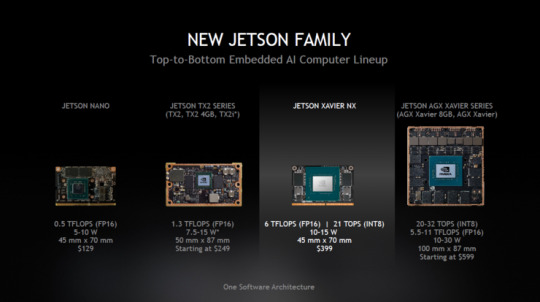
Jetson Xavier NX的上一款產品是在今年3月的GTC發布,英偉達創始人兼 CEO 黃仁勳宣布推出售價僅99美元的Jetson Nano。根據官方的說法,借助CUDA-X,Jetson Nano可以提供472 GFLOPS的AI性能,功率低至5W。這款售價不高,能夠運行所有AI模型的邊緣計算平台發布後獲得了極大的關注。
Jetson Nano的上一款產品在去年發布。去年九月的日本GTC,黃仁勳公佈了AGX陣容,包括Drive Xavier和新推出的Drive PegASUS,還有Jetson AGX Xavier。 Jetson AGX Xavier的大規模計算性能可以處理機器人至關重要的測距、定位、測繪、視覺和感知以及路徑規劃。
Jetson家族更早的產品Jetson TX2在2017年推出,提供兩種運行模態:一種是MAX Q,這種模態下能效比能達到最高,是TX1的2倍,功耗在7.5W以下;另一種是MAX P,性能可以做到最高,能效比同樣可以做到前一代的2倍,功耗則在15W以下。
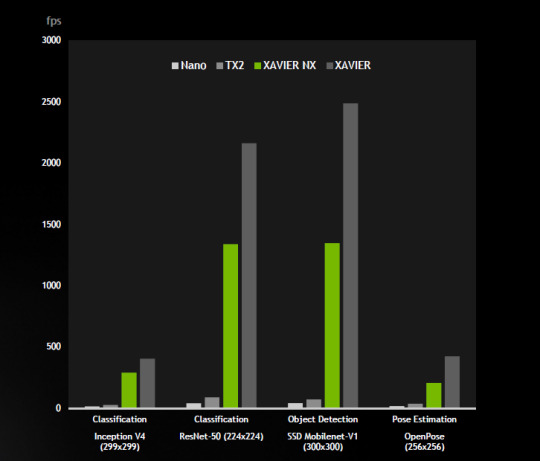
雖然推出的時間不同,但他們都具有一個區別於其他邊緣SoC的特點,並行運行多個神經網絡。
邊緣端實力增強,初創公司面臨更大生存壓力
英偉達在雲端AI芯片市場獲益頗豐,其中非常重要的原因就是擅長並行計算的GPU能夠在在數據中心的各種模型中訓練時體現出性能優勢。雖然憑藉雲端AI芯片成為了眾多AI芯片初創公司想要超越的目標,但英偉達也有自己的困擾。首先,為AI優化和設計的高性能GPU價格昂貴,讓不少開發者望而卻步。
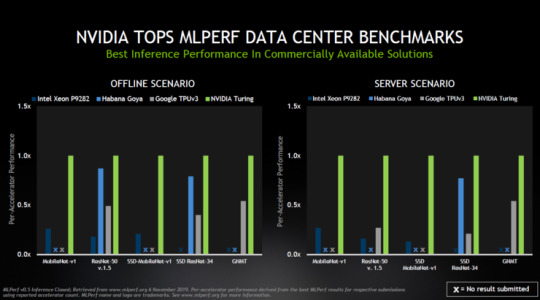
其次,隨著AI算法的逐步成熟,雲端AI訓練芯片市場的增速將會放緩,英偉達想要保持業績的增長以及在AI市場的領導力,就需要向邊緣AI市場拓展,同時,用雲端加邊緣一體化的解決方案吸引更多客戶。
從面向終端和邊緣設備的Jetson系列芯片的佈局來看,英偉達早已明白自己該怎麼做。如今,Jetson系列芯片算力從0.5TFlops到32TOPS,應用覆蓋小型嵌入式設備、智能汽車、工業設備等多種應用。今天高性能小尺寸Jetson Xavier NX發布,讓Jetson家族能夠提供性能和功耗更加多樣的邊緣芯片,這背後就是為了滿足AIoT市場多樣化的市場需求。
不過,更應該看到的是,英偉達如今不僅能夠提供雲端和終端AI芯片硬件,其成功背後還有強大的軟件生態的支撐。據雷鋒網(公眾號:雷鋒網)了解,Jetson系列已經吸引了40萬的開發者,擁有了3000用戶。
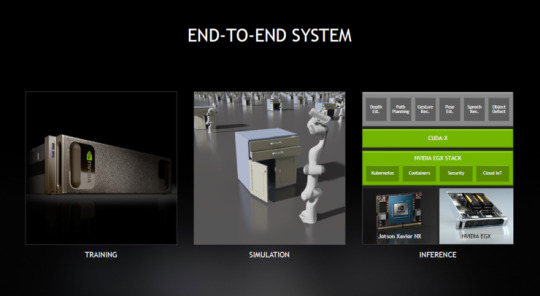
這對於AI芯片的初創公司而言顯然不是一個好消息,由於雲端AI芯片更加依賴生態,芯片的設計難度也更大,所以大部分AI芯片的初創公司都選擇在邊緣端市場,並且大都主要提供AI加速器。 AI芯片初創公司們希望憑藉獨特的架構設計以及領先的性能指標的芯片獲得市場的認可。
然而,開發者在進行AI算法遷移的時候往往需要使用AI芯片公司提供的編譯器等工具,這不僅會增加軟件開發者的使用門檻,還可能達不到預期的效果。因此,初創公司的AI芯片大部分都沒有得到非常有價值的應用。
這就意味著,AI芯片初創公司們在產品設完成並流片之後,如何找到合適的市場以及模式進行商業化變得非常關鍵,特別是在資本寒冬以及AI芯片進入落地戰的當下。
顯然,AI芯片初創公司們面臨著更加嚴峻的生存挑戰,一方面,無論是英偉達還是英特爾,他們在雲端和邊緣端都已經有競爭力很強的產品,在邊緣端,憑藉軟件生態以及渠道的優勢,巨頭們的芯片更容易獲得客戶,甚至連擅長軟件的Google都推出了面向邊緣市場的Google Edge TPU。另一方面,AI芯片初創公司想要推出有競爭力的產品就必須不斷迭代和投入,這就需要資金的持續支持,但融資環境以及更加激烈的市場競爭又增加了融資的難度。
正如雷鋒網在今年3月份的文章中指出的,AI芯片的戰火已經蔓延至邊緣端,Jetson Xavier NX的推出不僅是英偉達邊緣端AI芯片佈局的完善和實力的進一步增強,更是邊緣端芯片市場競爭更加激烈的標誌。
AI芯片市場更加激烈的競爭有助於推動AI的向前發展,但對於實力較弱的AI芯片初創公司而言,隨著芯片巨頭們更有競爭力產品的推出,以及像英偉達這樣的公司更願意稱自己為系統公司,而非單純的芯片公司,這讓AI芯片初創公司面臨著更加嚴峻的生存挑戰。
.(tagsToTranslate)nVIDIA(t)英偉達發布全球最小邊緣AI超級計算機 Jetson家族讓初創公司面臨更大壓力(t)kknews.xyz
from 英偉達發布全球最小邊緣AI超級計算機 Jetson家族讓初創公司面臨更大壓力 via KKNEWS
0 notes
Text
JetPack SDK 5.1.1 Release Now Live!
JetPack 5.1.1 is the new production release for the full NVIDIA Jetson Orin and Jetson Xavier family of hardware. It adds support for the newly announced Jetson Orin Nano Developer Kit (see the review here). NVIDIA Jetson Orin Developer Kit It also adds support for Jetson AGX Orin 64GB, Jetson Orin NX 8GB, Jetson Orin Nano 8GB and Jetson Orin Nano 4GB production modules. Here’s the official…
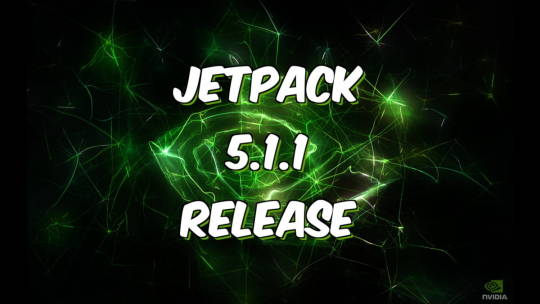
View On WordPress
0 notes
Text
Jetson Nano Benchmarks on Fastvideo SDK
Embedded imaging applications can definitely benefit from the latest release of NVIDIA Jetson Nano hardware. NVIDIA Jetson Nano is a small, powerful computer with embedded GPU that lets you run multiple neural networks in parallel for applications like image classification, object detection, segmentation, and speech processing.
We've tested Image & Video Processing SDK from Fastvideo with NVIDIA Jetson Nano Developer Kit and here we present our results of benchmarking for software modules which are specific for camera applications.

Fig.1. Jetson Nano Module
NVIDIA Jetson Nano hardware: Quad Core, 4GB RAM, GPU
128-core Maxwell GPU (for display and compute)
Quad-core ARM A57 @ 1.43 GHz (main CPU)
4 GB LPDDR4 (rated at 25.6 GB/s)
Gigabit Ethernet
4x USB 3.0, USB 2.0 Micro-B (the Micro USB port could be utilized both for 5V power input and for data)
HDMI 2.0 & eDP 1.4 (4K monitor support, HDMI or Display Port)
Support of MIPI CSI-2 and PCIe Gen2 high-speed I/O
DC Barrel jack for 5V power input
Storage microSD
Dimensions: 100 mm × 80 mm × 29 mm (carrier board is included)
It's interesting to note that according to CUDA Device Query application, the name of tested Jetson Nano module is "NVIDIA Tegra X1" with CUDA Capability 5.3. So it reminds Jetson TX1, but with half of CUDA Cores.
Video Encoding and Decoding Options (NVIDIA NVENC and NVDEC benchmarks)
Video Encode 4K @ 30 fps, 4x for 1080p @ 30 fps, 9x for 720p @ 30 fps (H.264/H.265)
Video Decode 4K @ 60 fps, 2x for 4K @ 30 fps, 8x for 1080p @ 30 fps, 18x for 720p @ 30 fps (H.264/H.265)

Fig.2. Jetson Nano Developer Kit
Hardware and software for benchmarking
CPU/GPU NVIDIA Jetson Nano Developer Kit
OS L4T (Ubuntu 18.04)
JetPack 4.2 with CUDA CUDA Toolkit 10.0
Fastvideo SDK 0.14.1
Jetson Nano Power Consumption and Power Management
In Jetson Nano hardware, NVIDIA uses Dynamic Voltage and Frequency Scaling (DVFS) approach. That power management technology is utilized in most of modern computer hardware to maximize power savings, where the voltage used in a component is increased or decreased, depending upon external conditions.
Jetson Nano Developer Kit is configured to accept power via the Micro USB connector. Some Micro USB power supplies are designed in such a way to output slightly more than 5V to account for voltage loss across the cable. The critical point is that the Jetson Nano module requires a minimum of 4.75V to operate. It's recommended to use a power supply capable of delivering 5V at the J28 Micro-USB connector.
There are some other power supply options for Jetson Nano. If total load is expected to exceed 2A, e.g., due to peripherals attached to the carrier board or due to high performance computational tasks, you have to lock the J48 Power Select pins disable power supply via Micro USB and enable 5V-4A via the J25 power jack. Another option is to supply 5V-6A via the J41 expansion header (two 5V pins can be used to power the developer kit at 3A each). The Jetson Nano Developer Kit is equipped with a passive heatsink, to which a fan can be mounted.
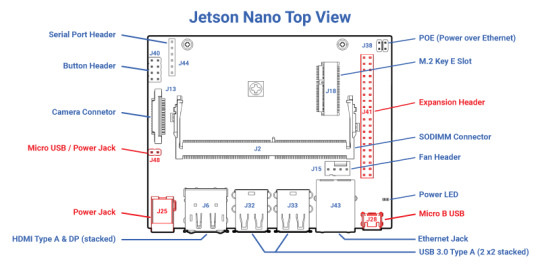
Fig.3. Top View of Jetson Nano Developer Kit
In general, total power usage comprised of carrier board, Jetson Nano module and peripherals. It is determined by particular use case. The carrier board consumes between 0.5W (at 2A) and 1.25W (at 4A) with no peripherals attached.
Jetson Nano module is designed to optimize power efficiency and it supports two software-defined power modes. The default mode provides a 10W power budget for the modules, and the other, a 5W budget. These power modes constrain the module to near their 10W or 5W budgets by capping the GPU and CPU frequencies and the number of online CPU cores.
Individual parts of the CORE power domain, such as video encode (NVENC) and video decode (NVDEC), are not covered by these budgets. This is a reason why power modes constrain Jetson Nano module to near a power budget, but not to the exact power budget. Your particular use case determines the module’s actual power consumption.
According to the performed tests with Fastvideo SDK, normal operation of Jetson Nano Developer Kit in 10W mode required more power than USB can offer (5V and 2A). USB-powered Jetson Nano can't work continuously under heavy workload on default clock (no jetson_clocks applied). It hanged up in 30-60 seconds after workload began. It seems to be due to power consumption by carrier board and other periphery devices. USB-powered Jetson Nano is working perfectly in 5W mode, but with less performance.
For Jetson Nano benchmark measurements was used external power supply with 5V and 4A. This is more than we could get from a standard Micro USB power adapter (5V and 2A), but it's necessary to get high performance. As we understand, one could get even better performance by supplying more power to Jetson Nano.
To manage the speed and the amount of power consumed on the NVIDIA Jetson Nano, we use nvpmodel -m0 and jetson_clocks to get maximum performance.
Jetson Nano Benchmark Performance for Camera Applications
For Jetson Nano we've done benchmarks for the following image processing kernels which are conventional for camera applications: white balance, demosaic, color correction, LUT, resize, gamma, jpeg / jpeg2000 / h.264 encoding, etc. It's not a full set of Fastvideo SDK features, but this is just an example of what we could get with Jetson Nano.
We've measured GPU kernel time for each image processing module to get understanding of how fast it could be done on Jetson Nano. This is the way to evaluate total time for the chosen set of modules from Fastvideo SDK. As soon as for some modules the performance depends on image content, you can request Fastvideo SDK for NVIDIA Jetson Nano (or for any othe NVIDIA GPU) for evaluation and to carry on with your own tesing.
CUDA initialization and GPU memory buffers allocations are not included in the benchmarks. Usually we do that just once, before the measurements, so it doesn't affect GPU performance.
For testing we've utilized 2K raw image (1920×1080, 8-bit) and 4K raw image (3840×2160, 8-bit), though all computations were carried out with 16-bit precision. Before JPEG compression we've converted 16-bit data to 8-bit per channel to comply with JPEG Standard. JPEG2000 compression benchmarks were measured for 24-bit images with 4:4:4 subsampling.
We've marked with gray color those rows in the Tables which are included in the simplest image processing pipeline of camera application for 2K and 4K resolutions. That pipeline consists of Host to Device Transfer, White Balance, HQLI Debayer, Color Correction, Gamma, JPEG compression, Device to Host Transfer. In the latest row of each Table we have shown the total GPU kernel time in ms, performance in MB/s and achieved FPS for the pipeline.
Table 1. Jetson Nano performance benchmarks for 2K raw image processing (1920×1080, 8-bit)
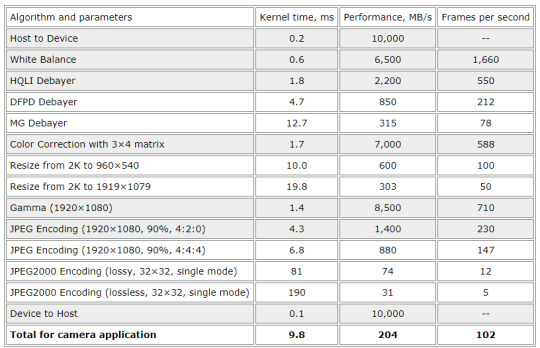
In real life camera application, there is a possibility to eliminate Host to Device copy by utilizing Jetson Zero-Copy. In that case, image from a camera is written via DMA directly to pinned buffer in system memory. Pinned buffer is accessible in both CPU and GPU. As other option, Device to Host copy could be hidden by overlapping of data transfer and computations in multi-thread application. Jetson Nano can do concurrent copy and kernel execution with 1 copy engine.
We can see that for the simplest image processing pipeline for 2K image on NVIDIA Jetson Nano we can reach 100 fps performance. If we utilize H.264 encoding via hardware-based NVENC (instead of Fastvideo CUDA-based Motion JPEG encoding) for the same pipeline, we could get 120 fps performance, which is the limitation of H.264 encoder (NVENC) for 2K resolution.
Table 2. Jetson Nano performance benchmarks for 4K raw image processing (3840×2160, 8-bit)
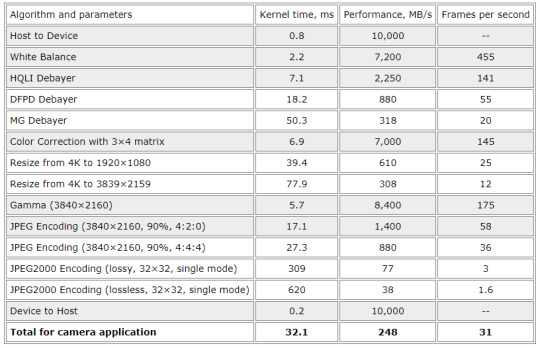
The same image processing pipeline for 4K RAW image on NVIDIA Jetson Nano could bring us the performance 30 fps. If we utilize H.264 encoding via hardware-based NVENC (instead of Fastvideo JPEG or MJPEG on GPU), we still get not more than 30 fps, which is the maximum for H.264 encoder (NVENC) for 4K resolution, but GPU occupancy in that case would be less.
We can see that Jetson Nano has sufficient performance for image processing in camera applications. For resolutions up to 4K we can get realtime performance to convert RAW to RGB with JPEG or H.264 compression.
Here we've published just a small part of Jetson Nano benchmarks that we've actually got with Fastvideo SDK. We would suggest to test that SDK with your image processing pipeline. You can send us your request to get evaluation version of Fastvideo Image Processing SDK for Jetson Nano, TK1, TX1, TX2 or AGX Xavier to carry out your testing for your images and your pipeline. Just fill the Contact Form below to get that SDK for your Jetson.
Other blog posts from Fastvideo about Jetson hardware and software
Jetson Image processing
Jetson Nano vs TX1 vs TX2 vs Xavier Benchmark Comparison
Jetson Zero Copy
Low latency H.264 streaming from Jetson TX2 to PC
Performance speedup for Jetson TX2 vs AGX Xavier
Remotely operated walking excavator on Jetson
Jetson AGX Xavier performance benchmarks
Original article see at: https://www.fastcompression.com/blog/jetson-nano-benchmarks-image-processing.htm
0 notes
Text
YOLO on the NVIDIA Jetson Nano
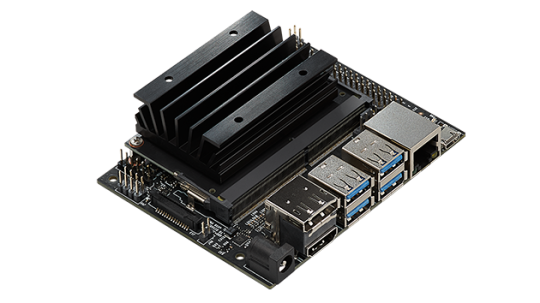
2019年4月に発売されたNVIDIAのシングルボード・コンピュータ Jetson Nano(*1)を使ってYOLO(*2)の実行性能を調べてみた。
ModelGFLOPs fpsCfg Weights YOLOv229.475 4 yolov2.cfg yolov2.weights YOLOv2-tiny 5.412 15 yolov2-tiny.cfg yolov2-tiny.weights YOLOv3 65.864 2 yolov3.cfg yolov3.weights YOLOv3-tiny 5.571 15 yolov3-tiny.cfg yolov3-tiny.weights
何れのモデルもDarknetフレームワーク(*3)上で実行(演算精度はFP32)。使用したリポジトリは下記 https://github.com/AlexeyAB/darknet
モデルの総演算量(GFLOPs)はDarknetツールによるモデルパース時の出力値を転記
実行性能(fps)は「USB Cam入力 → CNN推論 → Post処理(バウンダリBox描画等)→ 表示」の一連の演算に対するフレームレート。ビデオストリーム・サイズは640x480
モデルの入力サイズ(Cfg)は416x416
訓練済みウェイトパラメータ(Weights)のデータセットはCOCO、分類は80クラス
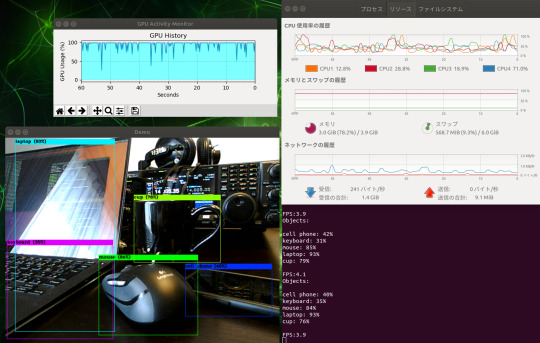
YOLOv2実行中のコンソール
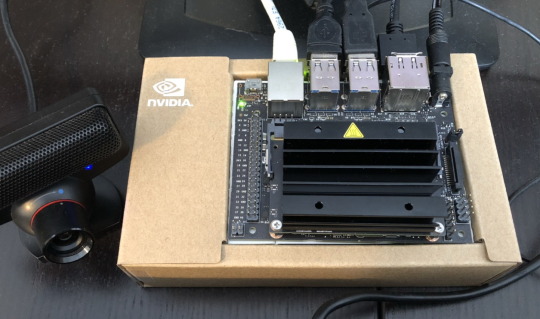
USB CamはSony PlayStation®Eye(60fps@640×480, 120fps@ 320×240)
(*1) Jetson Nanoは組み込みシステム向けにニューラルネットワークの推論演算をアクセラレートすることを狙ったシングルボード・コンピュータ。Jetsonシリーズの最廉価モデルの位置づけで、発売価格99ドル。FP16(半精度浮動小数点数)モードにおける公称ピーク性能は472GFLOPs。開発キットの主なハードウェアスペックは以下。
CPU 64-bit Quad-core ARM A57 @1.43GHz GPU 128-core NVIDIA Maxwell @921MHz Memory 4GB 64-bit LPDDR4 @1600MHz | 25.6GB/s Video Encoder 4kp30 | (4x) 1080p30 | (2x) 1080p60 Video Decoder 4kp60 | (2x) 4kp30 | (8x) 1080p30 | (4x) 1080p60 USB (4x) USB3.0 A (Host) | USB2.0 Micro B (Device) Camera MIPI CSI-2 x2 (15-position Flex Connector) Display HDMI | DisplayPort Networking Gigabit Ethernet (RJ45, PoE) Wireless M.2 Key-E with PCIe x 1 Storege MicroSD card (16GB UHS-1 recommended minimum) 40-Pin Header UART | SPI | I2C | I2S | Audio Clock | GPIOs Power 5V DC (μUSB, Barrel Jack, PoE) - 5W | 10W Size 80x100mm
開発用ソフトウェア環境としてはUbuntu 18.04をベースとする「JETPACK 4.2 SDK」が準備されており、CUDA, cuDNN, OpenCV, TensorRT, Python3.6/2.7等々の深層学習向けライブラリ群が同梱される。 サーバ側の学習環境はNVIDIA GPU上にCUDA+cuDNN+...+オープンソース・フレームワーク(TensorFlow, PyTorch, Caffe, etc.)で構築されるのが常だから、学習環境と推論環境とがこれらのエコシステムを介してシームレスに繋がるのがJetson開発環境の一番の“売り”と言えると思う。 (推論用ハードウェア性能だけで言えば、3月に発売されたGoogle Coral “Edge TPU”の方が速いし電力効率でも勝っている。一方、Googleの開発環境は上で述べた“地続き感”には乏しい) [参考URL] https://blogs.nvidia.co.jp/2019/04/02/jetson-nano-ai-computing/ https://developer.nvidia.com/embedded/learn/get-started-jetson-nano-devkit
(*2) YOLOは深層学習にもとづく物体検出アルゴリズムのひとつ。与えられた画像中の複数の物体に対し、分類クラスとバウンダリ・ボックス座標の信頼度確率を回帰問題として同時に解く実装がなされている。SSD(別種の物体検出アルゴリズム)と共にハードウェアのベンチマーク指標として用いられ���ことも多い。YOLOの能力を知るには以下のTED「コンピューターはいかに物体を即座に認識できるようになったのか 」を見ていただくのが手っ取り早い。 [参考URL] https://www.ted.com/talks/joseph_redmon_how_a_computer_learns_to_recognize_objects_instantly?language=ja#t-5153 https://pjreddie.com/darknet/yolo/ https://arxiv.org/abs/1612.08242 https://www.slideshare.net/DeepLearningJP2016/dl-reading-paper20170804pdf
(*3) Darknetは深層学習用オープンソース・フレームワークのひとつ。Cで実装されている。開発者のJoseph RedmonはYOLOの作者でもある。Darknet/YOLOの実に明快なライセンス条件はここを参照。
0 notes
Text
Find Best Nvidia Jetson Nano Developer Kit!!
Get started today with the Nvidia Jetson Nano Developer Kit by TANNA TechBiz!!
Nvidia Jetson Nano makes it easy for developers to connect a diverse set of the latest sensors to allow a range of AI applications. This SDK is used across the NVIDIA Jetson family of products and is fully compatible with NVIDIA's Artificial Intelligence frameworks for deploying and training deploying AI software.
Heavy applications can be executed using this Nvidia Jetson Nano. It also has an SD Card image boot like Raspberry pi, but with GPU (Graphical Processing Unit). It runs multiple neural networks in parallel and processes several high-resolution sensors concurrently.
Jetson Nano is used for various ML (Machine Learning) & DL (Deep Learning) research in various fields for Speech processing, Image processing, and sensor based analysis. It conveys & computes performance to run modern Artificial Intelligence workloads at unprecedented size. It is extremely power-efficient, consuming as little as 5 watts.
Buy Now!! Nvidia Jetson Nano with latest updated Specifications & features. Nvidia Jetson Nano Development Kit is a power-efficient and low cost. Best Online Purchase NVIDIA Jetson Nano in India at TANNA TechBiz.
Nvidia Jetson Nano Developer Kit is small but, supported by Nvidia JetPack, which includes, Linux OS, NVIDIA CUDA, cuDNN, board support package and TensorRT software libraries for multimedia processing, deep learning, computer vision, GPU computing, and much more.
Nvidia Jetson Nano frees you to innovate at the edge. You Experience powerful and efficient Artificial Intelligence, computer vision, and high-performance computing at just 5 to 10 watts. The software is even available using an easy-to-flash SD card image, making it fast and easy to get started.
Jetson Nano is also supported by NVIDIA JetPack, which includes a board support package (BSP), cuDNN, and TensorRT, Linux OS, NVIDIA CUDA other software libraries for deep learning, multimedia processing, computer vision, GPU computing, and much more.
0 notes
Text
Nvidia corrige une vulnérabilité du logiciel GeForce Experience
Nvidia a déployé une nouvelle version de son logiciel pour corriger la faille de sécurité. D'autres correctifs ont également été publiés pour le SDK JetPack. from ZDNet News https://ift.tt/322t9ST via IFTTT
0 notes
Text
NVIDIA Jetson Nano Development Kit-B01
NVIDIA Jetson Nano Development Kit-B01
Nano Jetson NVIDIA Developer Kit is a development kit Artificial Intelligence (AI) that can be used to run a variety of modern AI load with amazing performance. With the NVIDIA Developer Kit Nano Jetson now the developers can run the AI framework and a model for application of image recognition, object detection, segmentation, speech recognition and many more. Jetson NVIDIA Developer Kit Nano is powered by a micro USB and equipped with many I / O pins, ranging from GPIO to CSI. Pin I / O are plentiful this allows developers to connect various sensors for AI application development purposes. Nano Jetson NVIDIA Developer Kit is also supported by NVIDIA JetPack, which includes Board Support Package (BSP), Linux OS, NVIDIA CUDA, cuDNN, and TensorRT for the purposes of deep learning, computer vision, GPU computing,
NOTE: This kit is the latest version of NVIDIA Jetson Nano which has undergone several revisions of the terms of the arrangement of the components of the previous version (A02). The different versions of A02 and B01 can be seen in the image below.
Specification
GPU: 128-core Maxwell
CPU:Quad-core ARM A57 @ 1.43 GHz
RAM: 4 GB 64-bit LPDDR4 25.6 GB/s
External Storage: microSD (not included)
Video Encoder: 4K @ 30 | 4x 1080p @ 30 | 9x 720p @ 30 (H.264/H.265)
Video Decoder: 4K @ 60 | 2x 4K @ 30 | 8x 1080p @ 30 | 18x 720p @ 30|(H.264/H.265)
Soket Kamera: 2x MIPI CSI-2 DPHY lanes
Konektifitas: Gigabit Ethernet, M.2 Key E
Display Output: HDMI 2.0 and eDP 1.4
USB: 4x USB 3.0, USB 2.0 Micro-B
Interface: GPIO, I2C, I2S, SPI, UART
Dimension: 100 mm x 80 mm x 29 mm
Document
NVIDIA JetPack SDK
Development Kit User Guide
Grove Python Libraries for Nvidia Jetson Nano
NVIDIA Jetson™ family for products
Sample Applications
Setting up Jetson with JetPack
Classifying Images with ImageNet
Locating Objects with DetectNet
Semantic Segmentation with SegNet
Transfer Learning with PyTorch
equipment Products
NVIDIA Jetson Nano module and carrier board
Quick Start Guide and Support Guide
https://ift.tt/3aSPOT1 March 10, 2020 at 11:16AM
0 notes